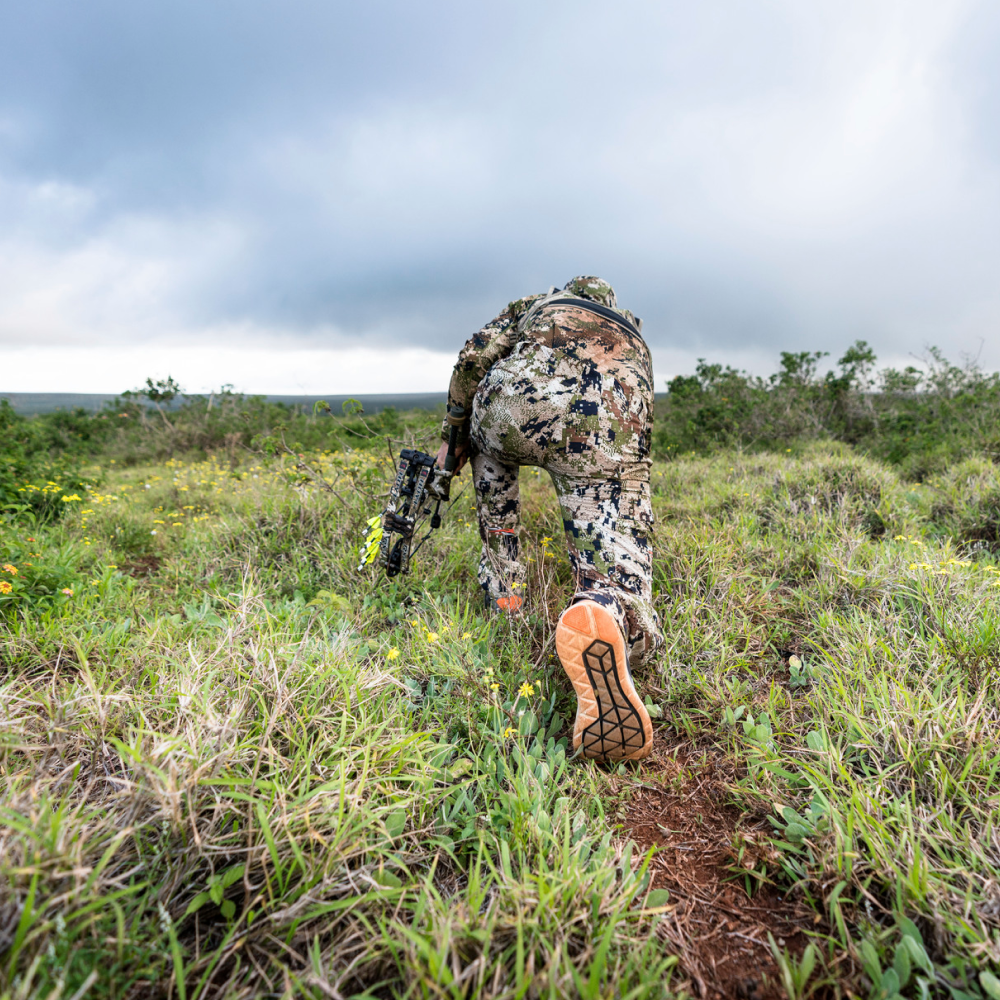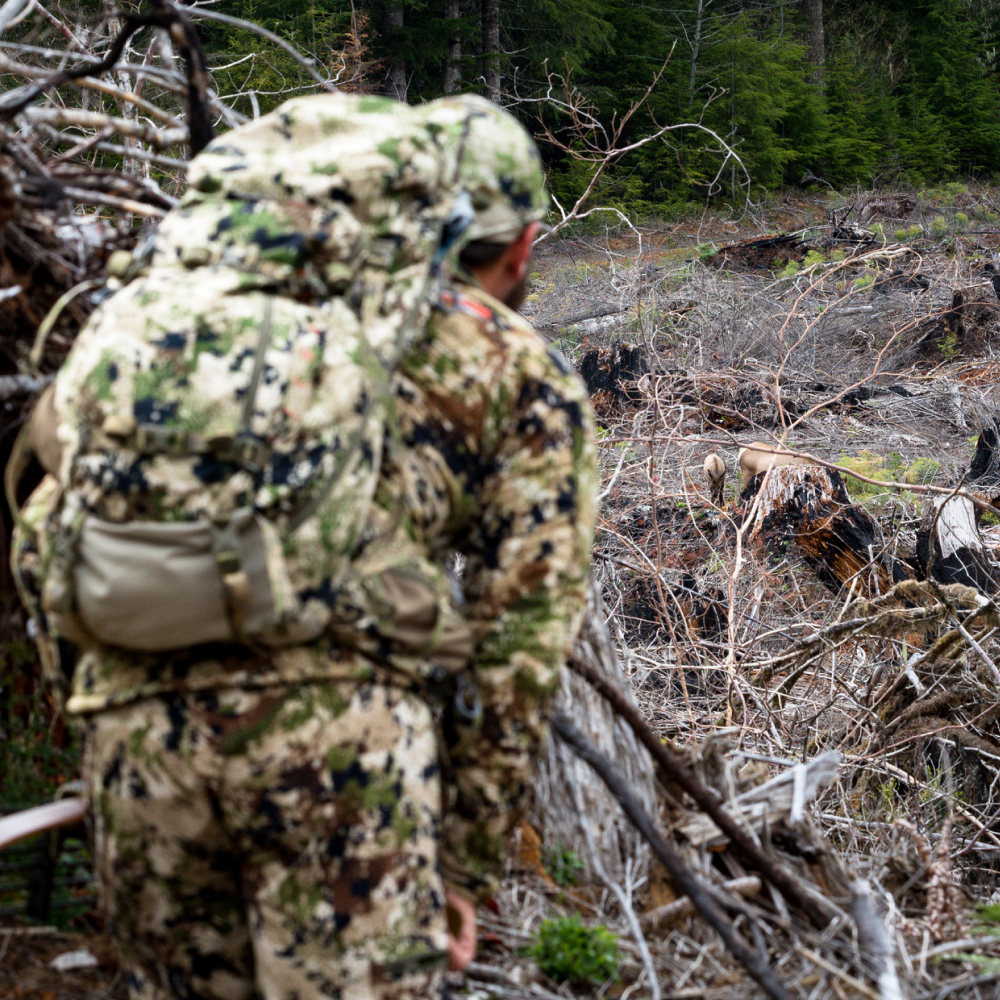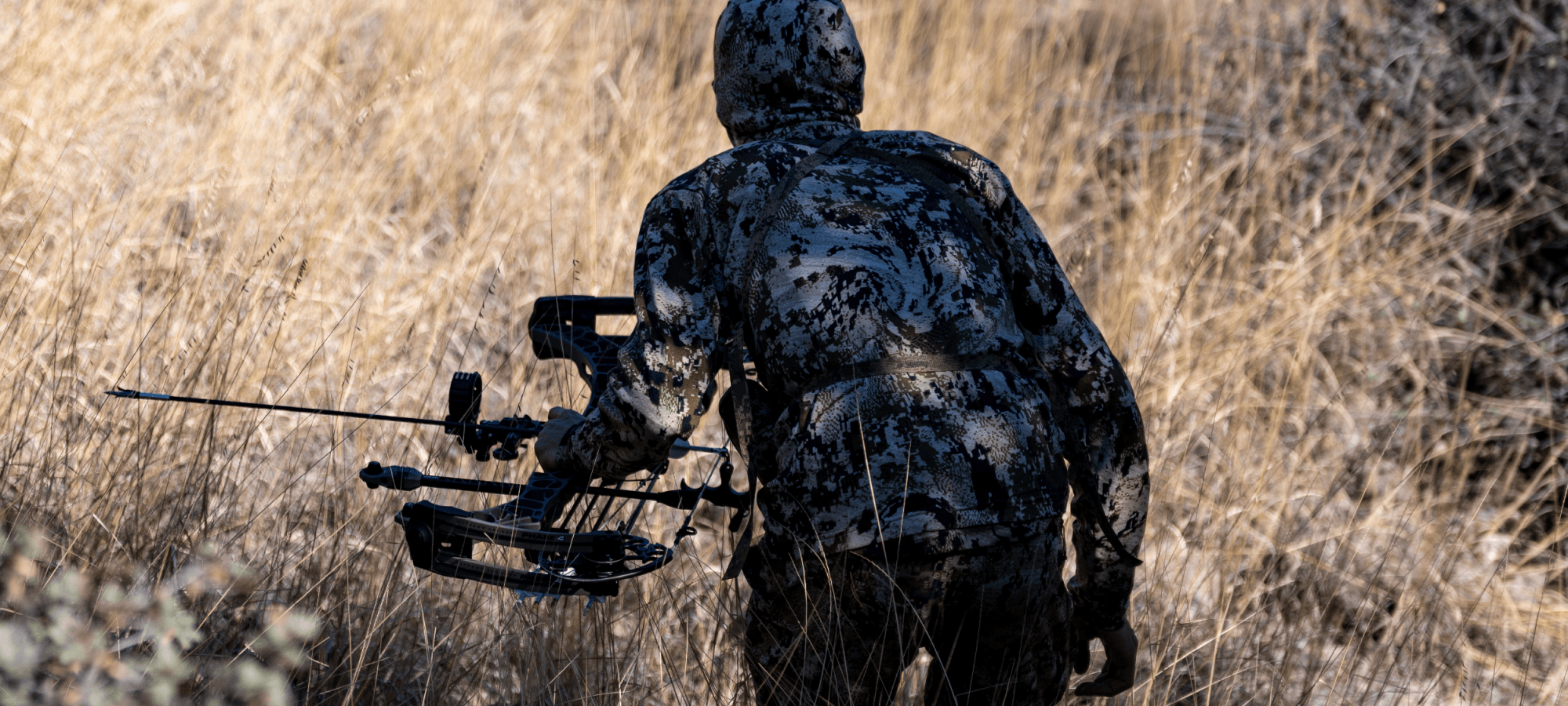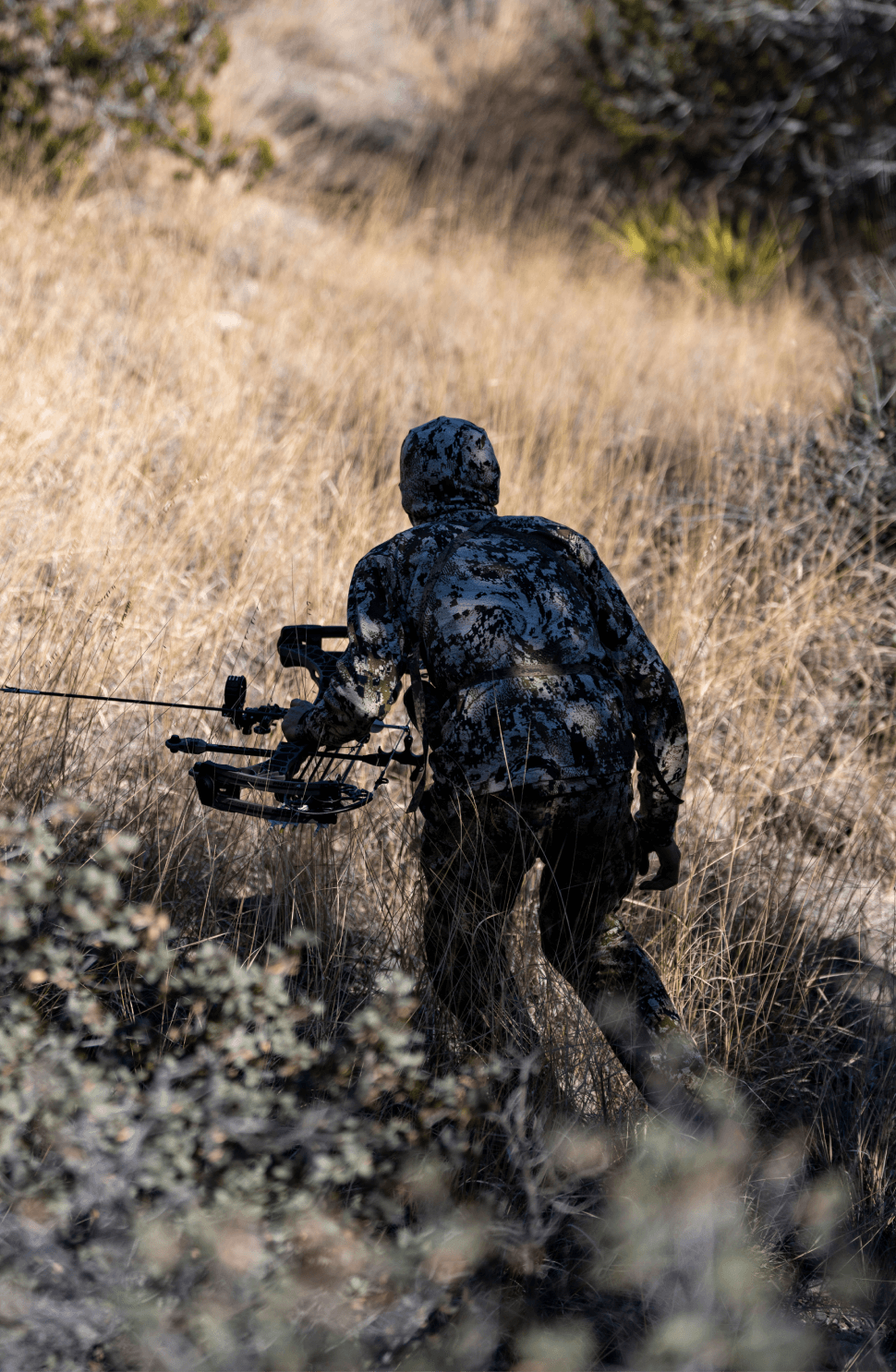Getting close and beating an animal’s finely tuned senses is the mark of an experienced archery hunter. Getting to 100 yards is relatively easy, but getting from 100 to 50? That’s the challenge. Mitigating human noise and eliminating common error is crucial to getting into bow range. Below are five tactics you can implement to turn the odds in your favor.
1. Stalk in Socks or Stalking Footwear - The sound of a twig snapping under your boot is a sure way for that bedded mule deer to lock onto you and spook. When I'm in tight to an animal, I want to feel the earth under my feet and know if I'm about to snap a twig or roll a rock. I can't do that with boots on, so it's either boots off and I stalk in socks, or I stalk in a light and super flexible, thin-soled trail runner that allows me to feel the ground. If I'm in cactus county and fear getting a chola in my foot, I'll put Safari Sneakers over my boots. Safari Sneakers are a fleece cover that goes over your footwear to muffle the sound of your footsteps.

2. Cut Out Loud Gear - We've all heard it; the swish, swish, swish sound of our hunting buddy’s pant legs brushing together. Depending on the material that sound can resonate for a hundred yards or more, guaranteeing they'll never get into bow range undetected. What's worse is that if you're the one making that sound you often can't hear it. So be a good hunting partner and politely tell your companion if they're making this sound. To prevent this, widen your stance and get pants with tapered legs and a quiet face fabric such as the Intercept Pant. Other tips? Swap out your metal wedding ring with a silicone one so it doesn't 'clang' against your bow. Cut off those metal zipper tabs on your pack and replace them with paracord so they don't jingle—or better yet stalk with the ultra-quiet Apex pack.

3. Turn Down the Volume - Remember that an opportunity could present itself at any time. Starting the moment you get to the trailhead, whisper, avoid clanking your trekking poles together, close the truck door quietly. If you cough a lot or have a cold, keep cough drops in your pocket and handy. A coughing fit is about as unnatural of a sound as it gets and a sure way to spook game. Sniffles and clearing of your throat fall into the same category.

4. Inch Worm - As you creep in on a bedded buck or slink into the middle of an elk herd, you want to go so slow that your movements won’t be detected. My best analogy is to inch worm your way in. Getting within 100 yards of an animal is often fast-paced and happens quickly. Cutting that distance in half can take an hour. Don't rush it. You've worked so hard to get this close, now slow down and trust your patience. Along the same lines, know when to move and when to freeze. If the animal looks your way, freeze. Even if an animal sees movement and stares you down, if you freeze (sometimes for 20-plus minutes), eventually that animal will settle down and look a different direction, at which time you can continue inching closer.

5. Use Knee Pads to Aid in Your Stalk - Standing is the ideal position to stalk and shoot from as it gives you the most range of motion, but it's difficult to hide your movements. Often you need to stalk or shoot from a low-profile position. The knee pads in the Intercept pants aren't 80's inline-skating knee pads—they're pliable, quiet, and easily removable, yet protect from the sharpest rocks so you can remain more comfortable as you wait for your shot opportunity.

When it comes to hunting, there's a lot you don't have control over such as the wind, weather, animal behavior, and hunting pressure. Stealth and reducing unnatural noises, however, are 100% in your control. Your keen attention to these factors will result in closer encounters, better shot opportunities, and more fulfilling experiences.


